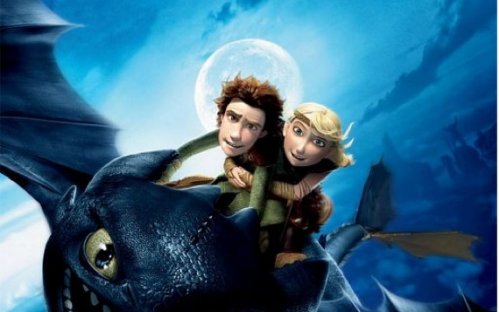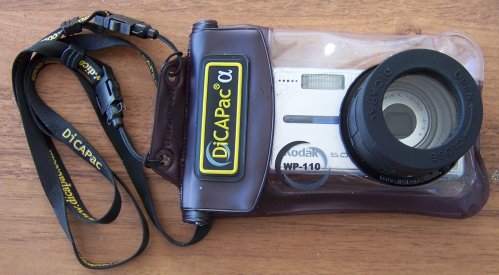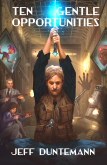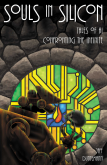
Back in the early oughts, I saw my first ultra-small form factor (USFF) PCs at our doctor’s office. The machines were Dell Optiplex SX270s, and they were little marvels: Quiet, fast, easy to field-strip and very reliable. (There was a certain widespread problem with bad electrolytic capacitors in that era, and I ran into a couple of SX270s and Samsung monitors containing said bad caps.) They were P4s running XP, and Carol used one successfully as her main machine for a number of years. We donated several to our church’s office, which was pretty full and rather tight, space-wise. Nobody had any trouble with them. Even in 2007, they could be had for $200 or less, depending on what they had in them in terms of RAM and HD.
The SX270s were 2001-era machines, and I’ve long since gotten rid of them. I had a couple of slightly later models, including the SX280 and GX620. I took the 620 to the Taos Toolbox SF workshop in the summer of 2011, along with my steampunk computer table and my Aethernet Concentrator, as Jim Strickland dubbed it. It mounted behind the monitor, and while that made it a little tricky to plug in thumb drives, it made very good use of what small space the table offered.
The steampunk computer table is still in my office, and if I ever go to another live-in workshop again, I’ll take it with me. The GX620 ran Win7 badly, and has been gone for several years now. I need a newer machine to go on the table. Notice I didn’t say a “new” machine. In fact, I was a little curious as to how cheap a machine I could get on eBay that would do the job (office apps) and mount to the dual arm monitor stand that I have clamped to the table. That meant a machine with VESA holes, ideally. Such exist; I had seen them years ago.
It didn’t take long to find such a machine: The HP/Compaq dc7900 USFF. At 10″ X 10″ X 2.75″ it’s a little smaller than the SX270. And the price, hokey smoke! I bought one for $37. Now, that didn’t include a hard drive, but I have a box full of empty SATA hard drives. It came with a DVD-RW drive (and LightScribe, at that, heh) 4GB RAM, and an outboard 135W power supply. The CPU is a 2.5 GHz dual-core Pentium E5200.

I installed Win7 on it, and boom! It just worked. It identified the Dell E228WFP monitor I had attached to the monitor stand and adjusted its resolution to match. I installed enough software to test it but no more than that; like I said, I don’t need it right now and it was mostly a research project and a bit of a stunt, to see how much machine I could buy online for how little money.
Below is a side view of the setup. I used four M4-10 screws to mount it to the monitor stand (VESA is a metric standard) and twisted the arm around until the dc7900 was level with the top edge of the monitor.

Internally, the machine is uncrowded, with two small and almost silent fans to pull air past the CPU heatsink and out of the machine generally. It has eight USB ports, plus both PS/2 keyboard and mouse DIN connectors.

The hard drive is mounted underneath the optical drive, but both come out very quickly without any screwdriver involvement. The hard drive is screwed into a little spring-loaded caddy that snaps into place and mates the SATA connectors firmly, with a little constant spring pressure to keep the drive from walking out of electrical connection.
I’ve only been messing with it for a few days, but so far it’s been trouble-free and able to do anything I could throw at it. No, it’s not as fast as my quadcore. I won’t be doing any gaming or video editing on it. Word processing and email don’t take a lot of cycles. Web browsers are wildcards in that regard, but so far it’s been able to render YouTube videos without any stutter or artifacts.
If you need a physically small machine for ordinary office work, I recommend it. And hey, for $37 plus a junkbox SATA HDD and an OEM copy of Win7, I’d say it’s hard to beat.




 The “kit” is just a Baggie with six caps and a short length of thin wire solder. If you don’t know soldering you’re going to have some trouble. However, the vendor has a very nice tutorial specific to the similar Samsung 204T/214T units
The “kit” is just a Baggie with six caps and a short length of thin wire solder. If you don’t know soldering you’re going to have some trouble. However, the vendor has a very nice tutorial specific to the similar Samsung 204T/214T units 

 Testing it was a challenge. We had hoped to bring home pictures of fish and coral and such, but as I’d mentioned earlier, both of our snorkel trips were canceled due to rough water and high winds. Our last day at sea, I put my beat-to-hell spare Kodak V530 in the bag and dunked it in the midships pool. Fish were scarce, but I did get a good shot of Carol’s ankles, and, more to the point, no water got into the bag with the camera.
Testing it was a challenge. We had hoped to bring home pictures of fish and coral and such, but as I’d mentioned earlier, both of our snorkel trips were canceled due to rough water and high winds. Our last day at sea, I put my beat-to-hell spare Kodak V530 in the bag and dunked it in the midships pool. Fish were scarce, but I did get a good shot of Carol’s ankles, and, more to the point, no water got into the bag with the camera. Perhaps because of its older demographic, Holland America is not as informal as other lines like Carnival. On 7-day cruises there are still two nights where dinner is formal, and to avoid packing a suit I rented a tux from the ship. The cost was not outrageous, and apart from a little tightness in the shirt collar (fixed with a cheap plastic collar extender, of which I always keep a few in my travel bag) the tux fit perfectly.
Perhaps because of its older demographic, Holland America is not as informal as other lines like Carnival. On 7-day cruises there are still two nights where dinner is formal, and to avoid packing a suit I rented a tux from the ship. The cost was not outrageous, and apart from a little tightness in the shirt collar (fixed with a cheap plastic collar extender, of which I always keep a few in my travel bag) the tux fit perfectly.









